- Tel: +44 (0) 208 305 0792
- FAX: +44 (0) 208 858 0101
- info@stoneleigh-eng.com
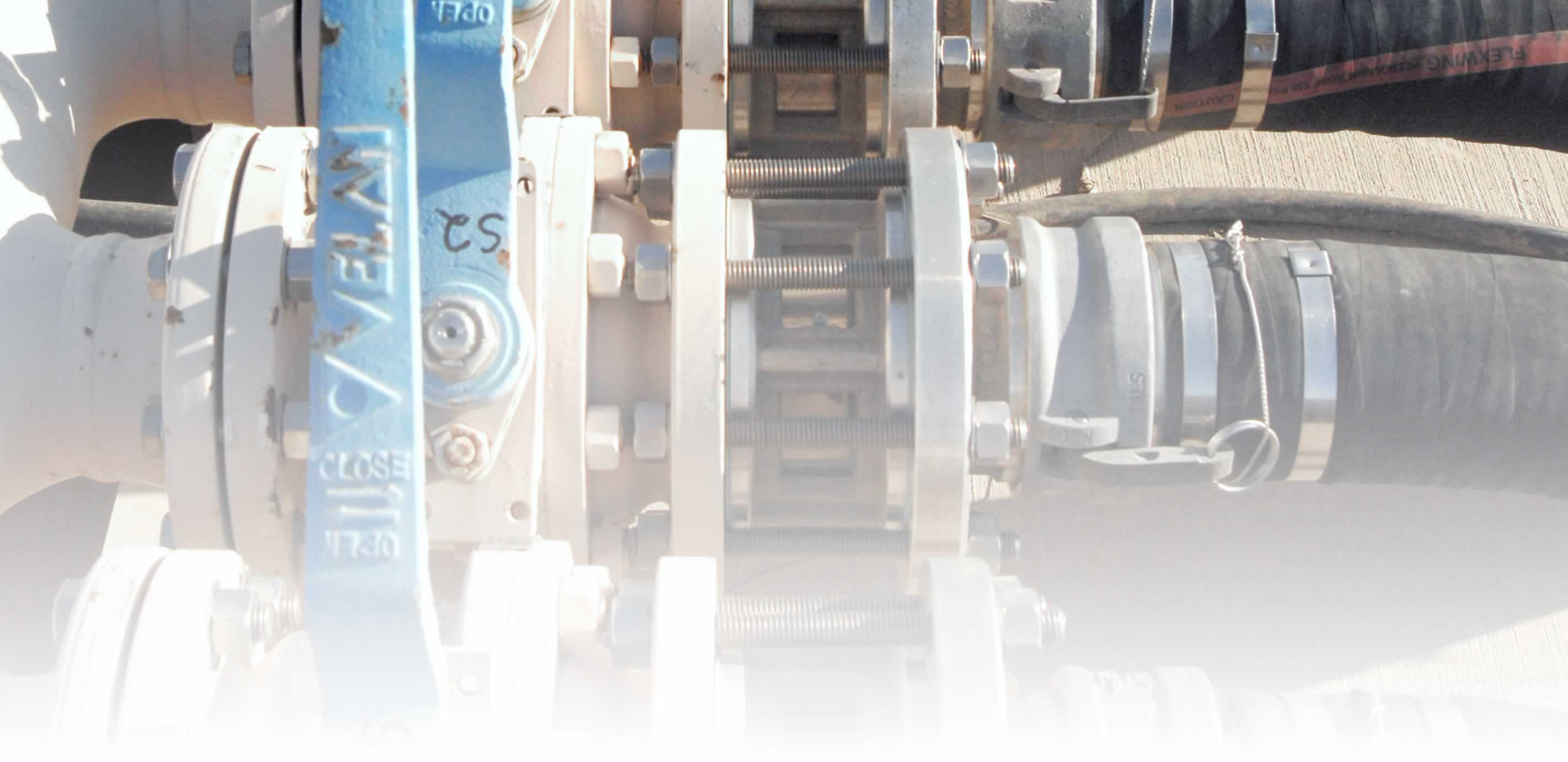
Gaskets
Please click HERE for general information on Gaskets
We are able to offer a comprehensive range of Gaskets and associated equipment to meet all application requirements. A selection follows.
For all order enquiries please contact us on: +44 (0) 208 305 0792 or email: info@stoneleigh-eng.com
CAF Gaskets
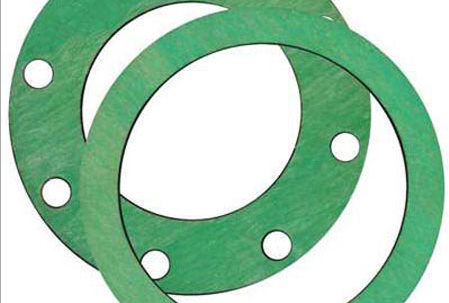
It is illegal to manufacture import or sell in the UK. If you supply us with your working conditions we can quote for the modern day equivalent.
Please contact us with your requirements
Grafoil Gaskets
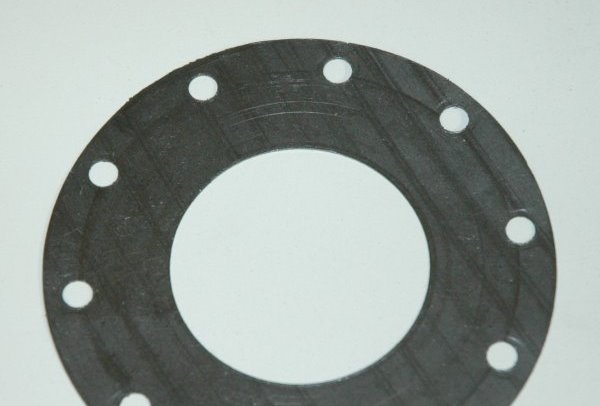
The GRAFOIL gasket was one of the first fluid sealing material made exclusively from pure, natural graphite flake. Its high resistance to heat, fire, corrosion and aggressive chemicals make it the most effective sealing solution available on the market today. The GRAFOIL gasket provide a tight seal even after repeated exposure to the harshest operating environments conditions. Our GRAFOIL Gaskets and Packing are performing successfully in a number of unusual, demanding areas. In some applications they are the only materials which can withstand the extreme service demands.
For further information on Grafoil Gasket Materials please press HERE
Flange Gaskets
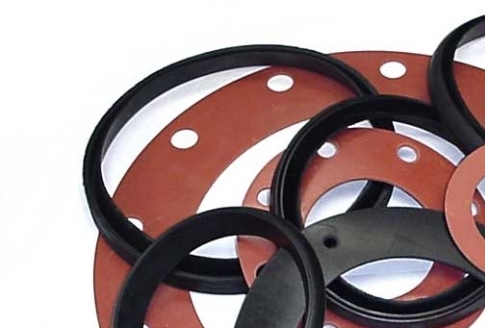
Product Information
The Flange Gasket is designed to fit between two sections of pipe that are flared to provide higher surface area. They are produced in a variety of sizes and are categorized by their inside diameter and their outside diameter. They are numerous types of Flange Gaskets, examples include: Sheet gaskets are cut to size either with bolt holes or without holes for standard sizes with various thickness and material suitable to media and temperature pressure of pipeline. Ring gaskets are mostly used in offshore oil and gas pipelines, designed to work under extremely high pressure. They are solid rings of metal in different cross sections like oval, round, octagonal etc. Spiral wound gaskets are also used in high pressure pipelines, made with stainless steel outer and inner rings, and a centre filled with spirally wound stainless steel tape wound together with graphite and Teflon.
Please contact us with your requirements
Spiral Wound Gaskets
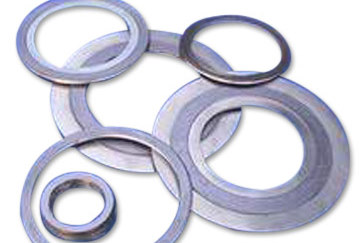
Our Spiral Wound Gaskets are constructed of a composite metallic continuous stripe with a special shaped profile, coupled with a continuous filing stripe (Grafoil, PTFE, Ceramic etc) evenly wound in concentric spiral under constant stress. The Spiral Wound Gaskets are further reinforced on the inner and outer diameter by winding of several electrically welded spiral metal. Due to the elastic action of the special metallic stripe profile, a key property of the Spiral Wound Gasket is the ability to offer a perfect sealing under all fluctuating pressure and temperature conditions. This elasticity can be modified further by selecting the correct components. They should be considered even with flanges at standard working with lightly pitted or buckled by the use of flanges.
Please contact us with your requirements
Gaskets
General Information On Gaskets
A gasket is a mechanical seal that fills the space between two mating surfaces,may also be called a seal, generally to prevent leakage from or into the joined objects while under compression. Gaskets save money by allowing "less-than-perfect" mating surfaces on machine parts which can use a gasket to fill irregularities. Gaskets are commonly produced by cutting from sheet materials, such as gasket paper, rubber, silicone, metal, cork, felt, neoprene, nit rile rubber, fiberglass, or a plastic polymer (such as polychlorotrifluoroethylene). It is usually desirable that the gasket be made from a material that is to some degree yielding such that it is able to deform and tightly fills the space it is designed for, including any slight irregularities. A few gaskets require an application of sealant directly to the gasket surface to function properly.
Some (piping) gaskets are made entirely of metal and rely on a seating surface to accomplish the seal; the metal's own spring characteristics are utilized (up to but not passing Sy, the material's yield strength). This is typical of some "ring joints" (RJ) or some other metal gasket systems such as those made by Graylock (an Oceaneering company). These joints are known as R-con and E-con compressive type joints.
Properties
One of the more desirable properties of an effective gasket in industrial applications for compressed fiber gasket material is the ability to withstand high compressive loads. Most industrial gasket applications involve bolts exerting compression well into the 14 MPa (2000 psi) range or higher. Generally speaking, there are several truisms that allow for best gasket performance. One of the more tried and tested is: "The more compressive load exerted on the gasket, the longer it will last". There are several ways to measure a gasket material's ability to withstand compressive loading. The "hot compression test" is probably the most accepted of these. Most manufacturers of gasket materials will provide or publish these results.
Gasket design
Gaskets come in many different designs based on industrial usage, budget, chemical contact and physical parameters:
Spiral-wound gaskets
Spiral-wound gasket utilizes a mix of metallic material and "filler material" generally the gasket has a chosen metal, normally a carbon rich or stainless steel, wound (hence the name) outwards in a circle (although other shapes are possible this is the primary) with the filler material, generally a flexible graphite, starting at the opposite side of the circle and winding in the same direction. This leads to a growing circle of alternating layers of filler and metal. These gaskets have proven to be reliable in most applications and although more expensive than solid material they do not require as high of bolt forces to be effective. This is possible mainly because the graphite makes the primary seal with the flange and the metal only acts to keep the gasket structurally sound.
Constant seating stress gaskets A constant seating stress gasket, introduced in 2005, represents a revolutionary advancement in gasket design. The gasket consists of two components; a solid carrier ring of a suitable material, such as stainless steel, and two sealing elements of some compressible material installed within two opposing channels, one channel on either side of the carrier ring. The sealing elements are typically made from a material (expanded graphite, expanded polytetraflouroethylene (PTFE), vermiculite, etc) suitable to the process fluid and application. Constant seating stress gaskets derive their name from the fact that the carrier ring profile takes flange rotation (deflection under bolt preload) into consideration. With all other conventional gaskets, as the flange fasteners are tightened, the flange deflects radially under load, resulting in the greatest gasket compression, and highest gasket stress, at the outer gasket edge. Since the carrier ring used in constant seating stress gaskets take this deflection into account when creating the carrier ring for a given flange size, pressure class, and material, the carrier ring profile can be adjusted to enable the gasket seating stress to be radially uniform across the entire sealing area. Further, because the sealing elements are fully confined by the flange faces in opposing channels on the carrier ring, any in-service compressive forces acting on the gasket are transmitted through the carrier ring and avoid any further compression of the sealing elements, thus maintaining a 'constant' gasket seating stress while in-service. Thus, the gasket is immune to common gasket failure modes that include creep relaxation, high system vibration, or system thermal cycles. The fundamental concept underlying the improved sealability for constant seating stress gaskets are that (i) if the flange sealing surfaces are capable of attaining a seal, (ii) the sealing elements are compatible with the process fluid and application, and (iii) the sufficient gasket seating stress is achieved on installation necessary to affect a seal, then the possibility of the gasket leaking in-service is greatly reduced or eliminated altogether.
Kammprofile gaskets
Kammprofile gaskets are used in many older seals since they have both a flexible nature and are great sealers. Kammprofiles work by having a solid corrugated (many equally spaced bumps) core with a flexible covering layer. This arrangement allows for very high compression and an extremely tight seal along the ridges of the gasket. Since generally the graphite will fail instead of the metal core, Kammprofile can be repaired when the seal is not needed such as during a shutdown of some kind. Kammprofile has a high initial cost for most applications but this can be justified both by long term savings and increased reliability.
Sheet gaskets
The premise is simple in that a sheet of material (Generally a fibrous material such as graphite is used) has the gasket shape "punched out" of it. This leads to a very crude, fast and cheap gasket. These gaskets can fill many chemical requirements based on the inertness of the material used and fit many budgetary restraints. Common practice prevents these gaskets from being used in many industrial processes based on temperature and pressure concerns.
Solid material gaskets
The idea behind solid material is to use metals which cannot be punched out of sheets but are still cheap to produce. These gaskets generally have a much higher level of quality control than sheet gaskets and generally can withstand much higher temperatures and pressures. The key downside is that a solid metal must be greatly compressed in order to become flush with the flange head and prevent leakage. The material choice is more difficult; because metals are primarily used, process contamination and oxidation are risks. An additional downside is that the metal used must be softer than the flange - in order to ensure that the flange does not warp and thereby prevent sealing with future gaskets. Even so, these gaskets have found a place in industry, although not a large one.
Double-jacketed gaskets
Double-jacketed gaskets are another combination of filler material and metallic materials. In this application, a tube with ends that resemble a "C" is made of the metal with an additional piece made to fit inside of the "C" making the tube thickest at the meeting points. The filler is pumped between the shell and piece. When in use the compressed gasket has a larger amount of metal at the two tips where contact is made (due to the shell/piece interaction) and these two places bear the burden of sealing the process. Since all that is needed is a shell and piece, these gaskets can be made from almost any material that can be made into a sheet and a filler can than be inserted. This is an effective option for most applications.
Improvements
Many gaskets contain minor improvements to increase lifespan or acceptable operating conditions:
A common improvement is an inner compression ring. A compression ring allows for higher flange compression while preventing gasket failure. The effects of a compression ring are minimal and generally are just used when the standard design experiences a high rate of failure.
A common improvement is an outer guiding ring. A guiding ring allows for easier installation and serves as a minor compression inhibitor. In some alkylation uses these can be modified on Double Jacketed gaskets to show when the first seal has failed through an inner lining system coupled with alkylation paint.


